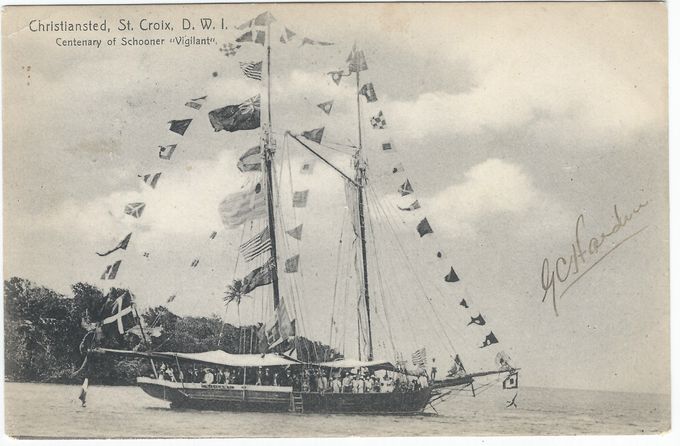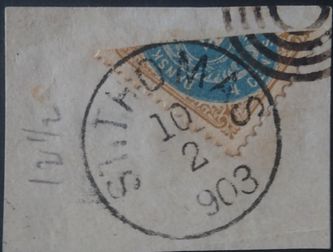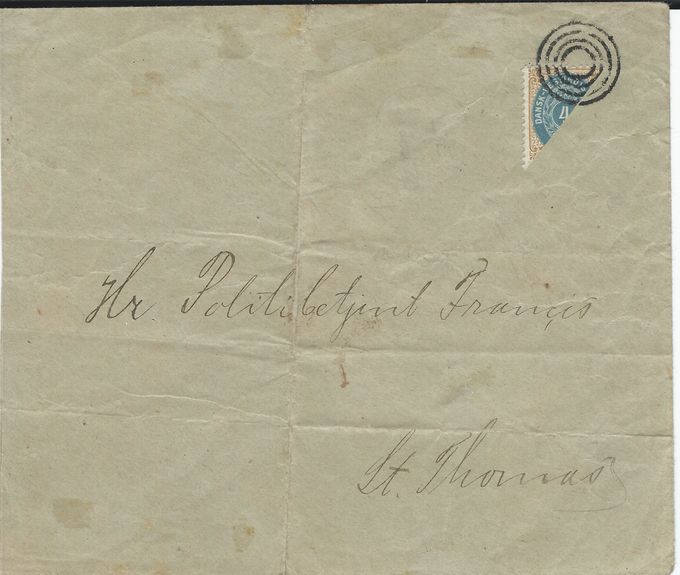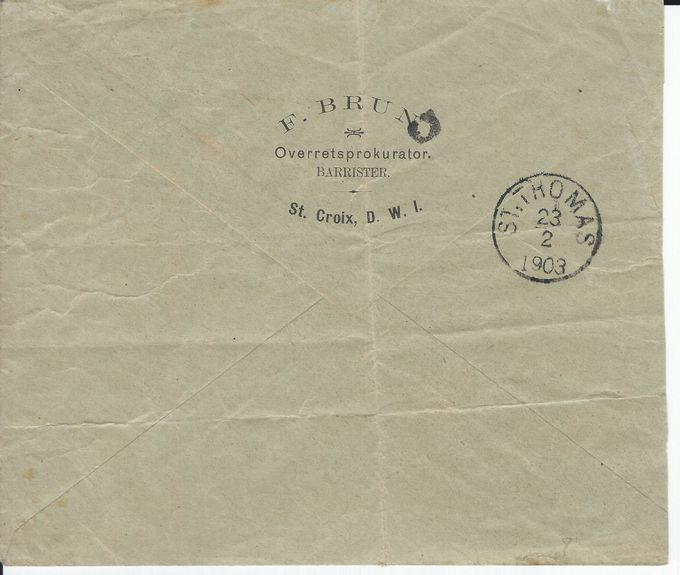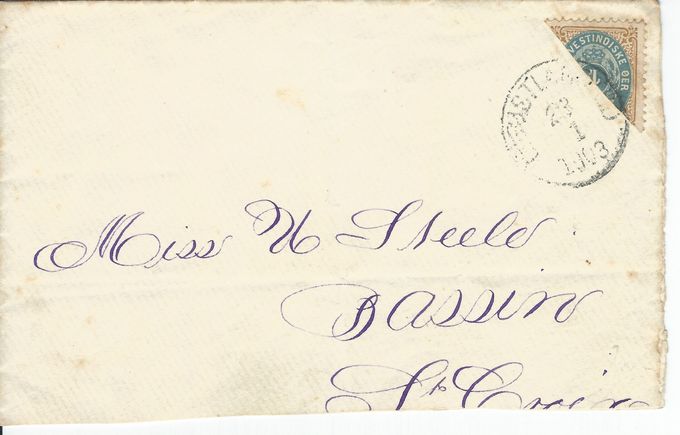ST. THOMAS 4 RINGS CANCEL - LETTER BOX
Mail schooner - “Vigilant"
The »Vigilant« in Christiansted harbour - commemorating the centenary of its supposed participation as »Den Aarvaagne« (Danish for vigilant) in a battle against English warships on March 3, 1801.
It has since been documented that it was a mistake to believe this as it was confused with another ship and actually never went to battle.
SHIP MAIL FROM CHRISTIANSTED TO ST. THOMAS
This partial destined for St. Thomas received the 4 rings cancel. Instead of backstamping the cover upon arrival - the bisect was further cancelled St. Thomas February 10 1903. Perhaps the cover received the St. Thomas backstamp too - we will never know. The partial is unique in the way that it has received double cancels - one of each. Furthermore - it has been placed in the letterbox in Christiansted on either the 9'th og 10'th of February - BEFORE the authorized date of use on St. Croix February 11 1903. A very interesting and unique partial.
Mail between St.Thomas and St.Croix was often sent by the mail schooner "Vigilant" that departed the Charlotte Amalie harbor every Tuesday and Friday evening. It arrived in Christiansted early the next morning - weather permitting. The "Vigilant"
and other mail carrying ships were obliged to follow certain regulations. The text of the Post Office Ordinance effective January 1 1902:
"Paragraph 9. The utilization of private vessels.
Vessels clearing from a Danish West India port are under opbligation at the demand of the Postal Department to receive and carry the articles mentioned in sub-letters a-d and i. If such vessels are trading as packets they shall likewise receive and carry other articles mentioned in paragraph 3, and the Postal Department shall be entitled to place in a suitable place on board the vessel locked letter boxes in so far as such have not been placed by the foreign administration with which the vessel is under control. .........On Arrival of a vessel to a Danish West India port the mails (closed mail, parcels and closed letter boxes) shall be landed, and all letters carried outside the mails delivered to the harbor master or his assistant".
The "Vigilant" letter box was heavily used by the public who could use it for depositing mail after closing hours of the local Post Office. St.Thomas used a special 4-rings cancel for mail arriving with stamps that had not been canceled. The 4 rings cancel would be used on the stamp(s) and then the St.Thomas date cancel would be struck on the back. The 4 rings cancel is common on DWI stamps and demonstrates just how extensive this pratice was. It is however - very rarely seen on bisected mail. The study (see the page "STUDY MATERIAL") only located three such items - one being an envelope. In fact the letter box practice using the bisected 4 cents was not even allowed - as the following was stated in the Notice to the public of January 20 on St. Thomas and February 10 (11) on St. Croix:
..."The correspondence thus prepaid should be handed in over the counter and not dropped into a letter box."
Sometimes a "C" would also be used to indicate that the mail originated from Christiansted. Christiansted Post Office did not have a similar 4 rings arrival cancel. Mail that had been deposited in the letter box while the ship was at St.Thomas would have been canceled "Christiansted" with a date on the stamp since the DWI Post Offices required all stamps to be canceled.
NOTE: Not all mail between St.Thomas and Frederiksted was routed via Christiansted. The post office also routed mail on ships sailing directly between the two localities.
The St.Thomas Post Office used a four-ring cancel for cancelling stamps on mail that arrived without a cancel. It is seen on approximately 1% of bisected mail (incl. envelopes and partials).
"C" indicates the mail was from Christiansted and it was furthermore backstamped St.Thomas 23 February.
LETTER BOX - EARLIEST REPORTED ST.CROIX POSTMARK ON COVER - SENT FROM ST.THOMAS TO CHRISTIANSTED
Letter box - letter cancelled in Christiansted January 23.
As previously mentioned the use of bisected 4 cents stamps on St.Croix was authorized on February 11 and this letter predates that by weeks. It is neither illegitimate nor philatelic. As mentioned above the letters were sent by ship without being canceled at the St.Thomas Post Office.
They were deposited in the letter box on the ships while at harbour. Upon arrival in Christiansted they were accepted as legimate mail since they orginated from St.Thomas - and the stamps were cancelled without a postage due penalty.
Please also see the page PREDATED POSTMARKS
Del siden
